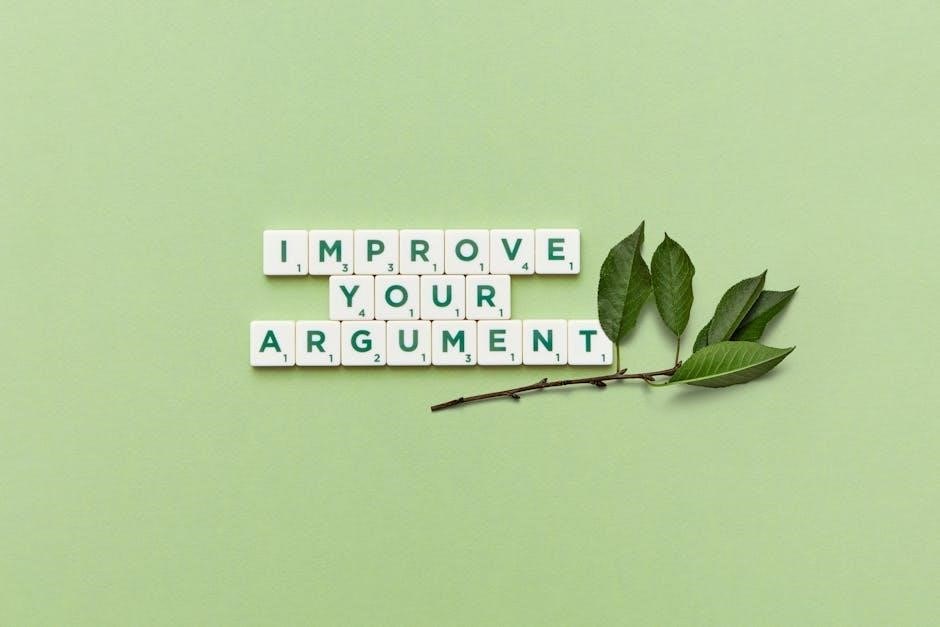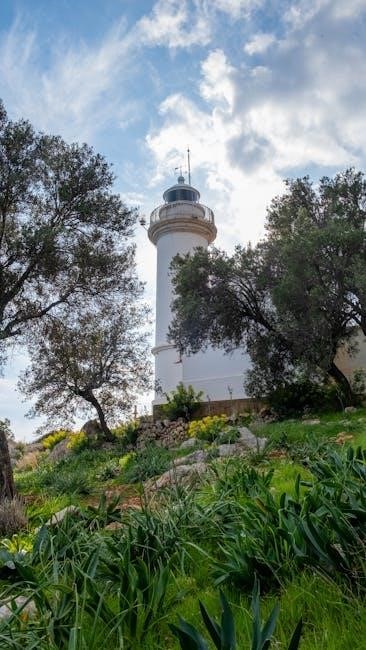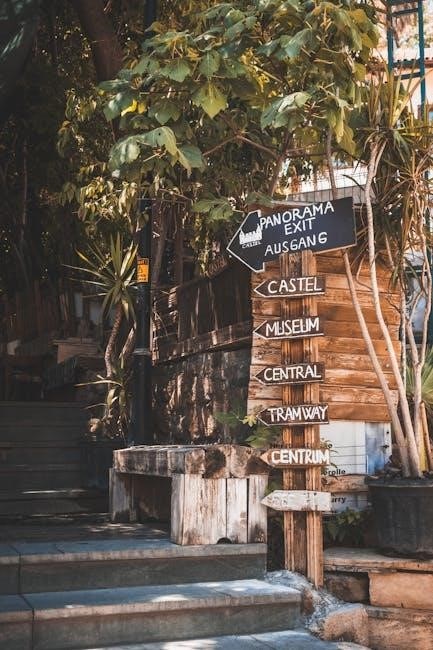Understanding USDA Hardiness Zone 7a
USDA Hardiness Zone 7a has average minimum temperatures of 0–5°F (-17.8 to -15°C)‚ with a medium-length growing season and four distinct seasons.
1.1 Temperature Range and Growing Season
Zone 7a has a temperature range with average minimums of 0–5°F (-17.8 to -15°C)‚ offering a medium-length growing season. The last spring frost typically occurs around April 15th‚ and the first fall frost happens near October 15th‚ providing about 7 months for gardening. This period allows sufficient time for most vegetables and plants to mature‚ making Zone 7a ideal for diverse gardening activities. Understanding these dates is crucial for planning and ensuring plants thrive without frost damage.
1.2 Key Features of Zone 7a for Gardeners
Zone 7a offers a moderate climate with cool winters and warm summers‚ allowing gardeners to cultivate a wide variety of plants. Its medium growing season supports both cool-season and warm-season crops‚ making it versatile for vegetable‚ flower‚ and herb gardens. The distinct seasons enable gardeners to plant in spring‚ summer‚ and fall‚ optimizing yields. Zone 7a’s balanced conditions create an ideal environment for experimenting with different planting strategies and enjoying a bountiful harvest throughout the year.
Key Factors for Planting in Zone 7a
Understanding frost dates‚ soil preparation‚ and temperature trends are crucial for successful planting in Zone 7a‚ ensuring optimal growth and harvest for both annuals and perennials.
2.1 Average Last Spring Frost Date and First Fall Frost Date
In Zone 7a‚ the average last spring frost date is April 15th‚ and the first fall frost date is October 15th‚ providing a 7-month growing season. Plant tender crops after the last frost and harvest before the first frost to ensure optimal growth and avoid damage.
2.2 Soil Preparation Tips for Zone 7a
Zone 7a gardeners should prepare soil by loosening to a depth of 8-10 inches and mixing in compost or well-rotted manure to improve drainage and fertility. Test pH levels; most plants thrive in a slightly acidic to neutral soil (6.0–7.0). Mulching helps retain moisture and regulate temperature‚ while crop rotation prevents nutrient depletion and reduces pests. Ensure soil is warm before planting warm-season crops by checking with a soil thermometer or waiting until late spring.

When to Plant in Zone 7a
Zone 7a has a medium-length growing season with average last spring frost on April 15th and first fall frost on November 15th‚ allowing for spring‚ summer‚ and fall planting.
3.1 Spring Planting Schedule
Spring planting in Zone 7a begins as soon as the soil thaws‚ typically in late March. Cool-season crops like spinach‚ lettuce‚ and peas can be direct-sown in early spring. By late March to early April‚ plant broccoli‚ cauliflower‚ and onions. After the last frost date‚ around April 15th‚ transition to warm-season crops such as tomatoes‚ peppers‚ and zucchini. This staggered approach ensures optimal growth and maximizes the growing season. Proper scheduling aligns with weather conditions‚ enhancing plant health and productivity.
3.2 Summer Planting Options
Summer in Zone 7a offers ideal conditions for warm-season crops. Plant heat-tolerant vegetables like tomatoes‚ peppers‚ zucchini‚ and okra after the last frost date. Herbs such as basil‚ mint‚ and cilantro thrive in summer’s warmth. Sow seeds for corn and beans in late spring to early summer for a bountiful harvest. Consider starting seeds indoors 4–6 weeks before the last frost for a head start. Succession planting ensures continuous production of crops like lettuce and radishes. Proper watering and sun exposure are key to maximizing summer growth.
3.3 Fall and Winter Planting Opportunities
Fall and winter offer unique planting opportunities in Zone 7a. Cool-season crops like spinach‚ kale‚ and Brussels sprouts thrive in cooler temperatures. Plant these 8–10 weeks before the first fall frost date for a late harvest. Garlic and bulbs like daffodils or tulips can be planted in fall for spring blooms. Winter gardening can continue with cold-hardy varieties using cold frames or greenhouses. Plan strategically to extend the growing season and enjoy fresh produce year-round.

Recommended Plants for Zone 7a
Vegetables: Tomatoes‚ peppers‚ and cucumbers thrive in Zone 7a’s climate; Flowers: Roses‚ hydrangeas‚ and daffodils are popular choices. Herbs: Basil‚ rosemary‚ and thyme grow well year-round.
4.1 Vegetables
In Zone 7a‚ vegetables like tomatoes‚ peppers‚ and cucumbers excel due to the warm summers. Root crops such as carrots‚ beets‚ and radishes can be planted in early spring and fall. Leafy greens like spinach and kale tolerate cooler temperatures‚ making them ideal for spring and fall harvests. Broccoli and cauliflower also perform well in Zone 7a’s climate. Plan carefully to ensure optimal growth and consider staggered planting for continuous yields throughout the growing season.
4.2 Flowers
Zone 7a supports a vibrant array of flowers‚ including perennials like coneflowers‚ black-eyed Susans‚ and daylilies‚ which thrive in its moderate climate. Annuals such as marigolds‚ zinnias‚ and petunias add bursts of color during the warm seasons. Spring-blooming bulbs like daffodils and tulips excel in Zone 7a‚ while roses‚ particularly hybrid teas and climbers‚ bring elegance to gardens. These flowers adapt well to the zone’s temperature range‚ ensuring a dynamic and visually stunning landscape throughout the growing season.
4.3 Herbs
Zone 7a is ideal for growing a variety of herbs‚ including basil‚ rosemary‚ thyme‚ and mint. Annual herbs like cilantro and dill thrive in the cooler spring and fall seasons‚ while perennials such as oregano and sage return year after year. Herbs benefit from well-drained soil and full sun‚ making them perfect for integrating into garden beds or containers. Planting herbs in Zone 7a allows for fresh flavors throughout the growing season‚ with many varieties tolerating the zone’s moderate winters and warm summers.


Monthly Gardening Calendar for Zone 7a
A monthly gardening calendar for Zone 7a helps plan tasks seasonally. January and February focus on pruning and seed starting. March and April involve soil preparation and planting cool-season crops. May and June shift to warm-season planting and mulching. July and August emphasize maintenance and pest control. September and October are for fall planting and harvest. November and December involve cleanup and planning for the next year‚ ensuring year-round productivity and garden health in Zone 7a.

Additional Tips for Success
Enrich soil with compost‚ mulch to retain moisture‚ and water consistently during dry spells to support healthy plant growth in Zone 7a gardens.
6.1 Seed Starting and Transplanting
Start seeds indoors 4-6 weeks before the last spring frost date for Zone 7a. Use high-quality potting mix and maintain consistent temperatures for optimal germination. Harden off seedlings by gradually exposing them to outdoor conditions over 7-10 days before transplanting. Avoid transplanting during extreme heat or cold. Water thoroughly after transplanting and monitor for signs of stress. This method ensures healthy establishment and maximizes growth potential for your Zone 7a garden.
6.2 Pest Control and Pollination Strategies
Implement integrated pest management by attracting beneficial insects like ladybugs and lacewings. Use organic pesticides as a last resort to avoid harming pollinators. Encourage pollination by planting flowers that attract bees and butterflies‚ such as lavender and sunflowers. Rotate crops annually to break pest life cycles and maintain soil health. Companion planting with herbs like basil and mint can deter pests naturally‚ creating a balanced and thriving garden ecosystem in Zone 7a.
With proper planning and care‚ Zone 7a gardens can thrive. Download a free planting guide for detailed schedules and tips. Explore resources like seed charts and gardening tools for success.
7.1 Final Thoughts on Planting in Zone 7a

Zone 7a offers a versatile climate for gardening‚ with a moderate growing season and distinct seasons. By understanding frost dates‚ soil preparation‚ and plant selection‚ gardeners can optimize their efforts. Planning according to the USDA guidelines ensures that each plant has the best chance to thrive. Whether growing vegetables‚ flowers‚ or herbs‚ staying informed and adaptable will lead to a successful and bountiful garden year-round. Happy gardening in Zone 7a!
7.2 Downloadable Planting Guide for Zone 7a
A downloadable planting guide for Zone 7a provides a detailed roadmap for gardeners‚ outlining optimal planting and harvesting times. It includes frost date specifics‚ soil preparation tips‚ and a monthly gardening calendar. This resource covers vegetables‚ flowers‚ and herbs‚ ensuring a successful growing season. Features like seed starting charts and pest control strategies make it indispensable. Download the guide to plan your garden effectively and maximize your yield in Zone 7a’s climate.
